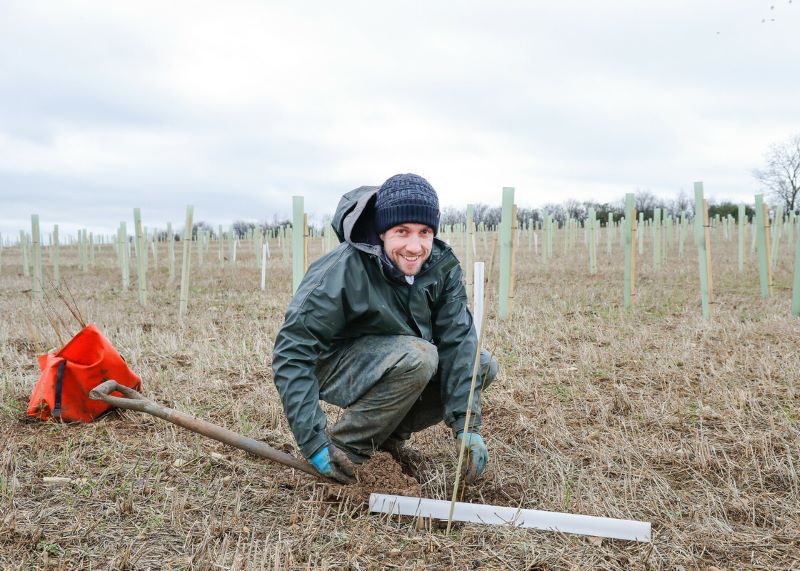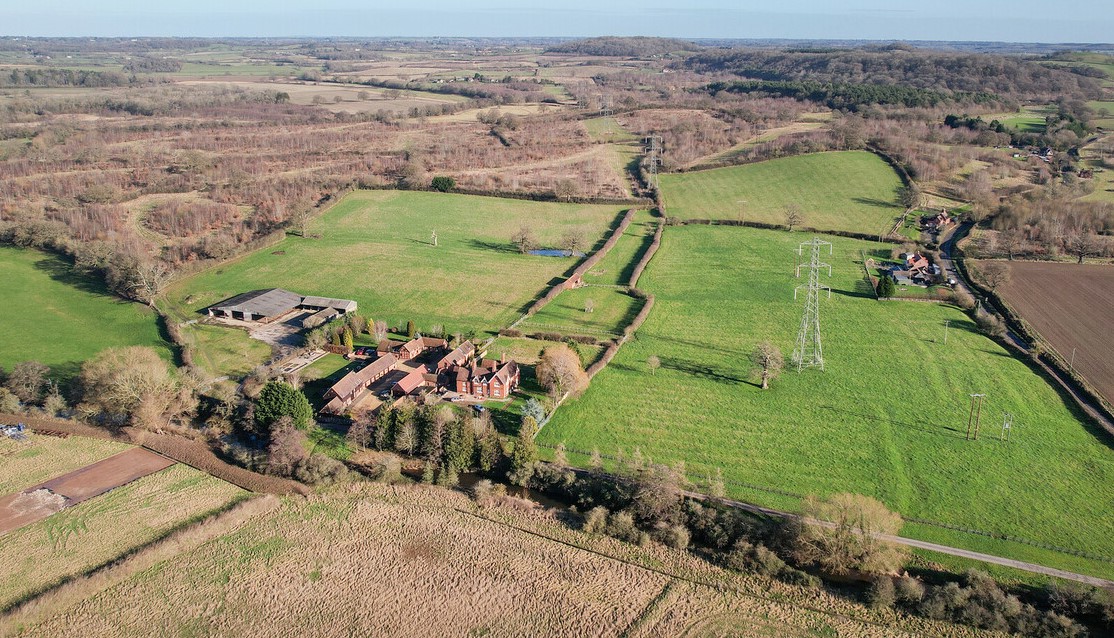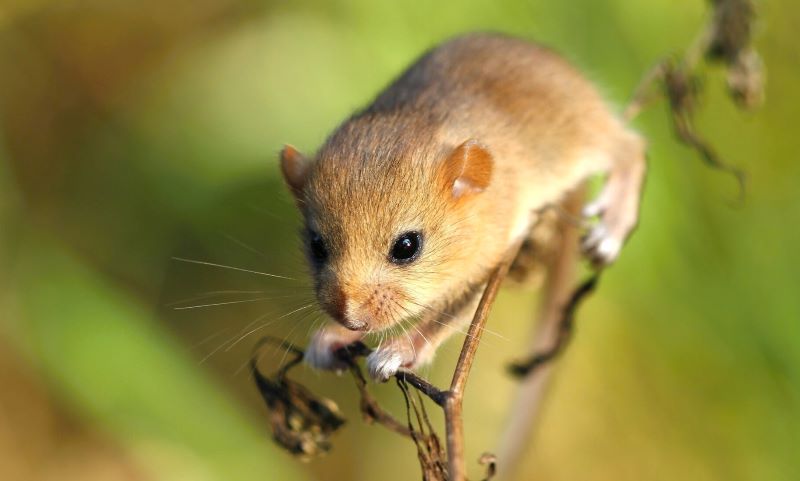
1. Growing the Forest
We continue to plant and protect England’s largest new native woodland, with two million trees now planted of the 13 million that will make up the 30,000 acre Forest.
2 millionth tree planted in the Forest
Planted at Gorcott Hill by a group of young pupils from Mappleborough Green C of E Primary School, this represents a huge milestone in our mission to create and conserve a 30,000 acre Forest.
New tree nursery established
Thanks to the Green Recovery Challenge Fund (GRCF) grant our new commercial tree nursery was set up as a social enterprise business. Staffed largely by adults with Special Educational Needs and Disabilities (SEND), the nursery provides our supported interns with much needed pathways into employment. The nursery will not only supply saplings for the Forest but will help support the Government’s ambitious tree planting targets for the country by providing a wholesale source of tree saplings for other organisations undertaking large scale tree planting.

Investing in foresters of the future
We employed 100% of our Forestry Apprentices and Forestry Interns from the 2021/22 intake, expanding the Forest team and further supporting these individuals with their forestry careers. Our continued commitment to investing in entry level training and development opportunities is vital, not just for the future of the Forest, but to help address the wider green skills shortage in the UK.
Year in Review
Over 120,000 trees planted
The purchase of land at Bearley and Binton back in early 2020 enabled us to realise our annual target of 300 acres of woodland creation this year for the first time in several years. Thanks to the tireless work of our staff and volunteers, 90,000 trees and a further 25,000 hedgerow trees and shrubs were planted. We have now created almost 4,500 acres of native broadleaf woodland. Read about another successful winter season in the Forest.
New social enterprise tree nursery set up
The Green Recovery Challenge Fund (GRCF) grant enabled us to establish a new commercial-scale tree nursery on land at Luddington, Warwickshire. Having our own tree nursery will ensure resilience in supply of saplings for our woodland creation, which is especially important if there is the anticipated shortfall in domestic supply of tree saplings as UK-wide tree planting targets are ramped up in line with the Government’s ambitious plans.
Another key aspect of the nursery is providing the means for people with Special Educational Needs and Disabilities (SEND) to build confidence and learn real life skills for employment.
The fact that only 5% of adults with SEND are in full time employment motivated us to do something to help address this shocking statistic.
The forestry team grew
As the Forest expands, so too does the forestry team to enable us to manage our growing woodland. In addition to recruiting more staff members from outside the organisation, we retained 100% of our forestry internship and apprenticeship staff, who were successful in applying for roles as Forest Rangers and Assistant Forest Rangers.
At the Heart of England Forest, we are pleased that we can offer meaningful career progression opportunities, and it validates the broad training programme we have in place, not just for the trainees, but for the whole team. Meet former Apprentice Phoebe, who is now a full-time Forest Ranger.
As part of the team’s growth, we have taken the opportunity to restructure and now have four dedicated forestry teams each looking after a corner of the Forest in Spernal, Dorsington, Honeybourne, and the Lenches. This will provide continuity of familiar faces on the ground for the local communities, and the teams will become the local guardians of the Forest with an intimate knowledge of their patch.

Walking route extended
We have added 1.5 miles of waymarked walking route at College Wood, the creation of which was funded by the Green Recovery Challenge Fund (GRCF). This route links with other permitted access in the area and increases the area that can be enjoyed by our supporters. We now have 58 miles of managed permissive and Public Rights of Way across the Forest.
I was thrilled in December to be offered a fulltime position in the charity as an Assistant Forest Ranger, highlighting the value of the skills I gained during the internship to progress within the field of conservation forestry."

Challenges faced
Unpredictable and extreme weather dominates at times, slowing down progress and forcing us to change work programmes. This might be prolonged wet periods during the planting season making access and actual planting problematic, or unseasonal high wind speeds causing damage to mature trees.
Along with many organisations we have found the procurement of materials and machinery particularly challenging this year. Long lead times or items simply not being available was also compounded by price increases (sometimes weekly) on stock such as fencing materials or machinery parts, due to a variety of factors including the pandemic which affected materials supply, along with the MS Ever Given being stuck in the Suez Canal.
The Year Ahead
Our overriding goal in Growing the Forest is to create another 300 acres of native broadleaf woodland this year. We have new land to plant such as Spernal Hall Farm and have identified other land for planting this coming winter.

In recent years we have been coppicing hazel planted in the last 20 years, much of it receiving the first cut. We have found this to be successful and want to now increase the area cut and utilise the cut material for making natural coppice products such as hazel hurdles or supplying binders and stakes for hedge laying.
Coppicing is important in increasing diversity within the growing woodland as it creates temporary open areas where ground flora and wildlife can thrive. This could encourage two key species to occupy the Forest once again - the dormouse and nightingale - both lost through fragmentation and loss of woodland and species we would love to see return to the Forest.

Something that often falls under the radar is old fencing. As the Forest grows, old farming fences between the woodlands become redundant for agricultural purposes but can still restrict access for biodiversity. We have identified this as a problem and have a programme of fence removal to allow freedom of movement to benefit wildlife.



